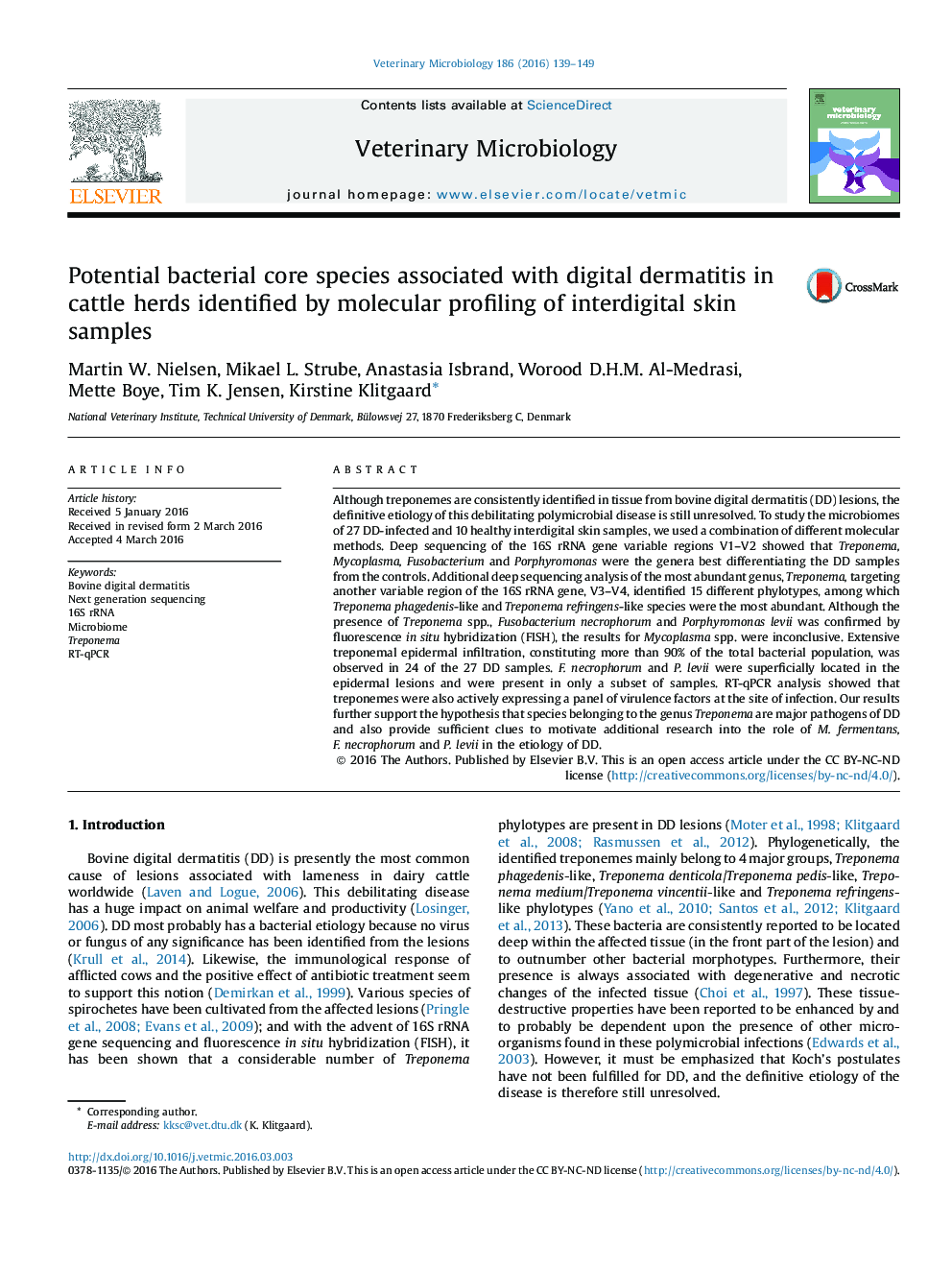| کد مقاله | کد نشریه | سال انتشار | مقاله انگلیسی | نسخه تمام متن |
|---|---|---|---|---|
| 5799711 | 1555337 | 2016 | 11 صفحه PDF | دانلود رایگان |
- Clear distinction between microbiota of DD lesions and control samples.
- Treponema, Mycoplasma, Fusobacterium and Porphyromonas are the core genera of DD.
- Treponemes are actively expressing virulence factors at the site of infection.
- The results support the involvement of multiple Treponema spp. in DD.
Although treponemes are consistently identified in tissue from bovine digital dermatitis (DD) lesions, the definitive etiology of this debilitating polymicrobial disease is still unresolved. To study the microbiomes of 27 DD-infected and 10 healthy interdigital skin samples, we used a combination of different molecular methods. Deep sequencing of the 16S rRNA gene variable regions V1-V2 showed that Treponema, Mycoplasma, Fusobacterium and Porphyromonas were the genera best differentiating the DD samples from the controls. Additional deep sequencing analysis of the most abundant genus, Treponema, targeting another variable region of the 16S rRNA gene, V3-V4, identified 15 different phylotypes, among which Treponema phagedenis-like and Treponema refringens-like species were the most abundant. Although the presence of Treponema spp., Fusobacterium necrophorum and Porphyromonas levii was confirmed by fluorescence in situ hybridization (FISH), the results for Mycoplasma spp. were inconclusive. Extensive treponemal epidermal infiltration, constituting more than 90% of the total bacterial population, was observed in 24 of the 27 DD samples. F. necrophorum and P. levii were superficially located in the epidermal lesions and were present in only a subset of samples. RT-qPCR analysis showed that treponemes were also actively expressing a panel of virulence factors at the site of infection. Our results further support the hypothesis that species belonging to the genus Treponema are major pathogens of DD and also provide sufficient clues to motivate additional research into the role of M. fermentans, F. necrophorum and P. levii in the etiology of DD.
Journal: Veterinary Microbiology - Volume 186, 15 April 2016, Pages 139-149
